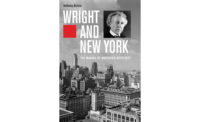Camden, one of the 32 boroughs making up Greater London, lies just northwest of the city’s center. It is famed in British architecture for a very high standard of public-housing projects of a unique kind, designed and built in the 1960s and ’70s. The borough architect was Sydney Cook (1910–79), whose great achievement at the very end of his career was to reject tower blocks in favor of low-rise high-density developments, and to assemble a team of ambitious young architects to design them.
What Cook reestablished during his eight-year tenure from 1965 to ’73 was the London tradition of a front door onto a street. Whereas in the past this had meant conventional row housing, the Camden architects experimented with a variety of newer forms. One of these was the “stepped section,” whereby each floor was set back from the one below, allowing garden terraces and walkways. In this manner, even upper-floor apartments were connected to the public realm.
The most fully realized version of this approach is the Alexandra Road Estate (1977), a human-scale concrete megastructure perched alongside the tracks of one of the main rail lines into central London. In form like a curving shallow valley, it is intensely social. This was designed by Cook’s key protégé and effective second in command, American-born Neave Brown. Indeed it was Brown rather than the eventually ailing Cook whose name came to be most closely connected with the Camden projects. Shortly before his death in January 2018, Brown was awarded the highest honor of the Royal Institute of British Architects, the Royal Gold Medal, in recognition of his intensely important contribution to the history of housing. Brown’s relatively small lifetime output is all now officially protected as important architecturally and historically. Many other architects contributed projects at this time in Camden, particularly Gordon Benson and Alan Forsyth (later to establish a successful private practice), and Hungarian-born Peter Tabori.
Architectural historian Mark Swenarton’s book is thorough—he has spoken to many of the key architects and politicians involved, Brown included. Cook had recruited his designers mostly from the Architectural Association School, the ideas hothouse, which itself had largely rejected high-rise solutions for housing. Cook himself disliked big housing projects, preferring to perform urban repair with a greater number of smaller ones. A key example—taking up a substantial section of this book—is Benson & Forsyth’s Branch Hill Estate (1976) in upmarket Hampstead, highly controversial politically and very expensive to build. The pairs of 21 attached houses step down the hill, intersected by alleys. The multilevel interiors are sophisticated. This is social housing of a quality equal to many luxury housing developments.
That project was a high-water mark. By then Cook had retired, and he died the year Margaret Thatcher became prime minister and dismantled much of the official apparatus of public-sector work of this nature. But Cook left an extraordinary legacy. Swenarton notes, citing a famous earlier architect of garden cities and suburbs, “not since Raymond Unwin in 1902 had a British architect offered so clear-cut and coherent an alternative to the prevailing orthodoxy in housing design.”







